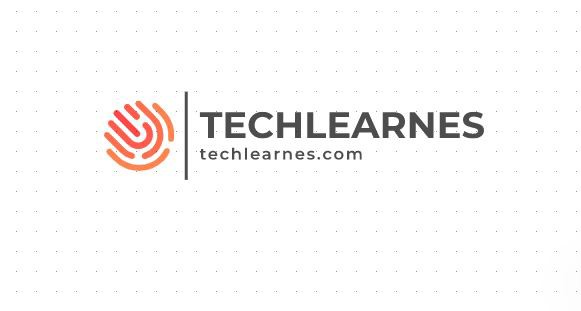Introduction to Human Performance
Welcome to our blogpost “Business in Human Performance: The Ultimate Guide to Enhancing Human Potential”. In today’s fast-paced and competitive world, businesses are constantly searching for ways to unlock human potential. The concept of human performance is gaining traction as organizations recognize its critical role in driving success. It’s not just about hitting targets or meeting deadlines; it’s about enhancing every individual’s capabilities to foster a thriving work environment.
Imagine a workplace where employees are motivated, engaged, and equipped with the tools they need to excel. This vision is becoming more attainable as companies prioritize human performance strategies that lead not only to personal growth but also organizational excellence. As we delve into this ultimate guide on business in human performance, you’ll discover how optimizing your workforce can transform your company from within.
Get ready to explore the many facets of human performance and uncover practical insights that will help elevate both individuals and teams in any business landscape!
The Importance of Human Performance in Business
Human performance is a cornerstone of any successful business. When employees operate at their best, productivity soars. This leads to increased efficiency and ultimately drives profitability.
A workforce that performs well contributes positively to company culture. High morale fosters collaboration and innovation, which are essential for growth in today’s competitive landscape.
Moreover, understanding human performance allows businesses to identify strengths and weaknesses within teams. Tailoring development programs can unlock potential that may otherwise remain dormant.
Investing in human performance also enhances employee retention rates. Workers who feel valued are more likely to stay loyal, reducing turnover costs significantly.
Companies prioritizing human performance attract top talent. A reputation for nurturing employee capabilities sets them apart in the job market, making it easier to recruit skilled professionals eager for growth opportunities.
Factors that Affect Human Performance
Human performance is influenced by a variety of factors. Physical health plays a significant role, as well-being directly affects energy levels and productivity.
Mental state also matters. Stress, anxiety, and motivation can greatly impact how individuals perform their tasks. Creating an environment that fosters mental clarity can boost overall output.
Another key factor is workplace culture. Supportive teams encourage collaboration and innovation, while toxic environments can stifle creativity.
Skillset cannot be overlooked either. Continuous training ensures employees are equipped to meet challenges head-on.
External influences like work-life balance contribute significantly to human performance. When personal time is respected, employees feel valued and engaged in their roles. Each of these elements works together to shape the potential for success within any organization.
Strategies for Enhancing Human Performance in the Workplace
To enhance human performance in the workplace, start with clear goal-setting. Encourage employees to set specific, measurable objectives that align with company values. This fosters motivation and accountability.
Next, invest in ongoing training and development programs. Regular workshops or online courses keep skills sharp and knowledge current. Employees thrive when they feel their growth is prioritized.
Creating a supportive environment is key as well. Promote open communication where feedback flows freely among all levels of staff. A culture of collaboration can spark creativity and innovation.
Don’t overlook flexibility in work arrangements. Allowing remote work or flexible hours can help individuals manage stress better while boosting productivity.
Recognize achievements consistently—big or small. Celebrating successes reinforces positive behavior and encourages continued effort across teams.
Implementing a Culture of Wellness and Personal Development
Creating a culture of wellness and personal development begins with leadership. Leaders must embody the values they wish to instill in their teams. This sets the tone for an environment that prioritizes well-being.
Encouraging open communication is vital. Employees should feel comfortable sharing their needs and aspirations without fear of judgment. Regular check-ins can foster this dialogue, allowing management to gauge employee satisfaction actively.
Incorporating wellness programs is another effective strategy. Activities such as mindfulness sessions or fitness challenges can boost morale while showing employees they matter. Additionally, providing access to resources like coaching or skill workshops empowers individuals on their growth journeys.
Recognizing achievements—both big and small—reinforces a supportive atmosphere where personal development thrives. Celebrations of progress help create bonds among team members, making them feel valued within the organization’s fabric.
By nurturing these elements consistently, businesses cultivate an enthusiastic workforce dedicated to mutual success.
The Role of Technology in Improving Human Performance
Technology plays a pivotal role in enhancing human performance across various industries. Wearable devices, like fitness trackers and smartwatches, offer real-time data on health metrics. This information empowers employees to take charge of their well-being.
Moreover, software solutions can streamline workflows and boost productivity. Tools like project management apps help teams collaborate efficiently, minimizing distractions and maximizing focus.
Artificial intelligence also contributes significantly. It analyzes patterns in employee behavior to identify areas needing improvement. Tailored training programs can then be implemented based on these insights.
Virtual reality is emerging as an innovative approach for skills development. It provides immersive experiences that allow employees to practice critical tasks in safe environments without the pressure of real-world consequences.
By leveraging these technological advancements, businesses foster environments where human potential can flourish effortlessly.
Measuring and Tracking Progress
Measuring and tracking progress in human performance is essential for continuous improvement. Organizations can use various metrics to assess employee engagement, productivity, and overall well-being.
One effective approach involves setting clear, achievable goals. These objectives provide a benchmark to evaluate progress over time. Regular check-ins help employees stay focused and motivated.
Surveys can also be beneficial. Gathering feedback on workplace culture and personal development initiatives reveals areas that need attention. This data drives informed decisions about resource allocation.
Technology enhances measurement capabilities significantly. Wearable devices or apps track individual health metrics such as sleep patterns, physical activity, and stress levels. By analyzing this information, businesses tailor interventions more effectively.
Furthermore, visualizing data through dashboards makes it easier to communicate results across teams. When everyone understands their contributions toward company goals, accountability naturally increases.
Case Studies of Successful Companies Prioritizing Human Performance
Google is renowned for its commitment to employee wellbeing, demonstrating that a focus on human performance can yield remarkable results. They provide amenities like mindfulness programs and fitness facilities. These initiatives enhance productivity and foster a collaborative culture.
Salesforce also stands out with its emphasis on mental health resources. The company offers access to therapists and wellness coaches, significantly improving employee satisfaction. This approach not only boosts morale but directly correlates with increased retention rates.
Another notable example is Johnson & Johnson, which integrates personal development into its business model. Their “Energy for Life” program equips employees with tools to optimize their physical and mental health, leading to heightened engagement in the workplace.
These case studies illustrate how prioritizing human performance creates environments where both employees and businesses thrive together.
Challenges and Solutions for Integrating Human Performance into Business Practices
Integrating human performance into business practices presents several challenges. Resistance to change is often at the top of the list. Employees may be hesitant about new initiatives, fearing they will disrupt established routines.
Another common hurdle is resource allocation. Companies frequently struggle with dedicating sufficient time and budget to implement effective programs that foster human development.
To address these issues, clear communication becomes essential. Engaging employees early in the process helps alleviate fears and builds buy-in for new strategies.
Additionally, organizations can start small by piloting programs before a full rollout. This approach allows businesses to gather feedback and make adjustments based on real-world experiences.
Incorporating technology also provides an innovative solution. Tools for tracking progress can enhance accountability while making it easier for teams to measure their performance improvements over time.
Conclusion
Embracing the concept of human performance is essential for businesses aiming to thrive in today’s competitive landscape. Prioritizing employee potential not only enhances productivity but also fosters a vibrant workplace culture.
When organizations invest in their people, they unlock creativity and innovation. This leads to improved problem-solving capabilities among teams.
Moreover, by nurturing individual growth, companies can cultivate loyalty and reduce turnover rates. Happy employees often translate into satisfied customers.
Adopting a holistic approach that integrates wellness and personal development contributes significantly to overall success.
Incorporating technology further amplifies these efforts by providing tools that enhance efficiency and engagement.
As more businesses recognize the value of human performance, we see a shift toward sustainable practices focused on long-term success rather than short-term gains. Each step taken towards enhancing human potential pays dividends across all organizational levels.
Frequently Asked Questions (FAQs)
As businesses increasingly recognize the value of investing in human performance, questions often arise. Below are some frequently asked queries that can help clarify this vital aspect of organizational success.
What is human performance?
Human performance refers to how well individuals execute tasks and responsibilities within a given environment. It encompasses physical, cognitive, and emotional capabilities that influence productivity and overall wellbeing.
Why is enhancing human performance important for businesses?
Improving human performance directly affects employee engagement, satisfaction, and retention. When employees perform at their best, organizations experience increased efficiency, innovation, and profitability.
What factors impact human performance in the workplace?
Numerous elements play a role in shaping human performance. These include physical health, mental wellbeing, work culture, leadership styles, job design, resources available for personal development or training opportunities.
How can companies measure improvements in human performance?
Organizations can employ various metrics such as employee surveys on satisfaction levels or productivity rates before and after implementing new strategies aimed at enhancement. Regular feedback sessions also contribute valuable insights into progress made over time.
Are there specific technologies tailored to enhance human performance?
Yes! Many applications exist designed to support aspects like mental wellness (meditation apps), fitness tracking (wearable devices), skill-building platforms (online courses), fostering collaboration via communication tools—all contributing towards bettering individual performances collectively.
Can small businesses implement these strategies effectively too?
Absolutely! Improving human potential doesn’t require extensive budgets; simple initiatives—like flexible working hours or encouraging open dialogue among team members—can lead significant results without breaking financial constraints.
Addressing these common inquiries sheds light on the comprehensive approach necessary for integrating business practices centered around optimizing our greatest asset: people. As organizations embark on this journey toward enhanced effectiveness through improved focus on meaningful growth opportunities—both personally and professionally—transformative outcomes await them ahead.

